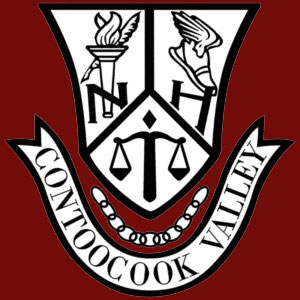by ConVal School Board Member Rich Cahoon
Over the past decade, there have been many efforts to study the configuration of ConVal schools, and to recommend alternative models that would be educationally appropriate and financially sustainable. In addition to the not fewer than six potential models considered in the past year, there were earlier efforts such as the Elementary School Study Committee, the Model Study Committee, and the District Study Committee.
What these efforts all have in common is that none of them recommended undoing the middle school model, and moving sixth grade into the elementary schools. Multiple studies involving thousands of hours of effort on the part of dozens of ConVal administrators, School Board members, and members of the public, and none have ever identified moving sixth graders back to our small elementary schools as being an educationally sound approach.
There is a reason for this: ConVal’s middle schools work. They provide broad and rigorous educational opportunities, do so in a fiscally responsible manner, and support the social and emotional wellbeing of our students.
First, ConVal’s middle schools provide excellent educational opportunities. In recent years, both South Meadow School and Great Brook School have been honored as New Hampshire Middle School of the Year. Staff members have received awards for excellence, at the regional, state and national levels.
Students at our middles schools have access to a wider array of offerings than we are able to offer in our small elementary schools. So far this year, my fifth-grade student at Great Brook School has been able to access courses in robotics, computer programming, Spanish, and Greek mythology. These programmatic offerings are simply not feasible in an elementary school with a student body of a few dozen students.
Second, ConVal’s middle schools are financially efficient, and maintaining the middle school model costs less than adding grades to the elementary schools. There are meaningful economies of scale in larger buildings. When there are 75 students in a given grade in one building, fewer teachers are required than when those 75 students are spread out over six or seven buildings. At some elementary schools, there are not enough classrooms available to move in two additional grades, and doing so would require adding on to the buildings, at considerable cost.
Every year, the New Hampshire Department of Education gathers data from all New Hampshire School Districts and publishes a spreadsheet of the cost per student for each district, broken out by grade level. In 2017-2018, the per-pupil cost of ConVal middle schools was $17,233. The per pupil cost of ConVal elementary schools was $20,099. Moving students back to elementary schools does not make financial sense.
Third, ConVal’s middle schools are supportive of the social and emotional needs of our students. Advocates for ConVal’s small elementary schools often speak of the “family-like” environment of our smallest schools. It is true that many students find an environment where they spend five years with the same very small cohort of peers to be rewarding. But this is not true of all students. In the ConVal district, more families from small schools request that their children be moved to a larger school, than families from larger schools request assignment to a smaller. By the time children reach the end of fourth grade, many of them are ready for the opportunity to broaden their social horizons. Our middle schools provide that opportunity, as well as providing a smooth transition from small elementary schools to a much larger high school
ConVal’s administration has never recommended educating sixth grade students in our small elementary schools. Doing so would limit the educational and social opportunities available to those students, and come at a significantly higher cost. So why would we do it? ConVal’s middle schools work.

